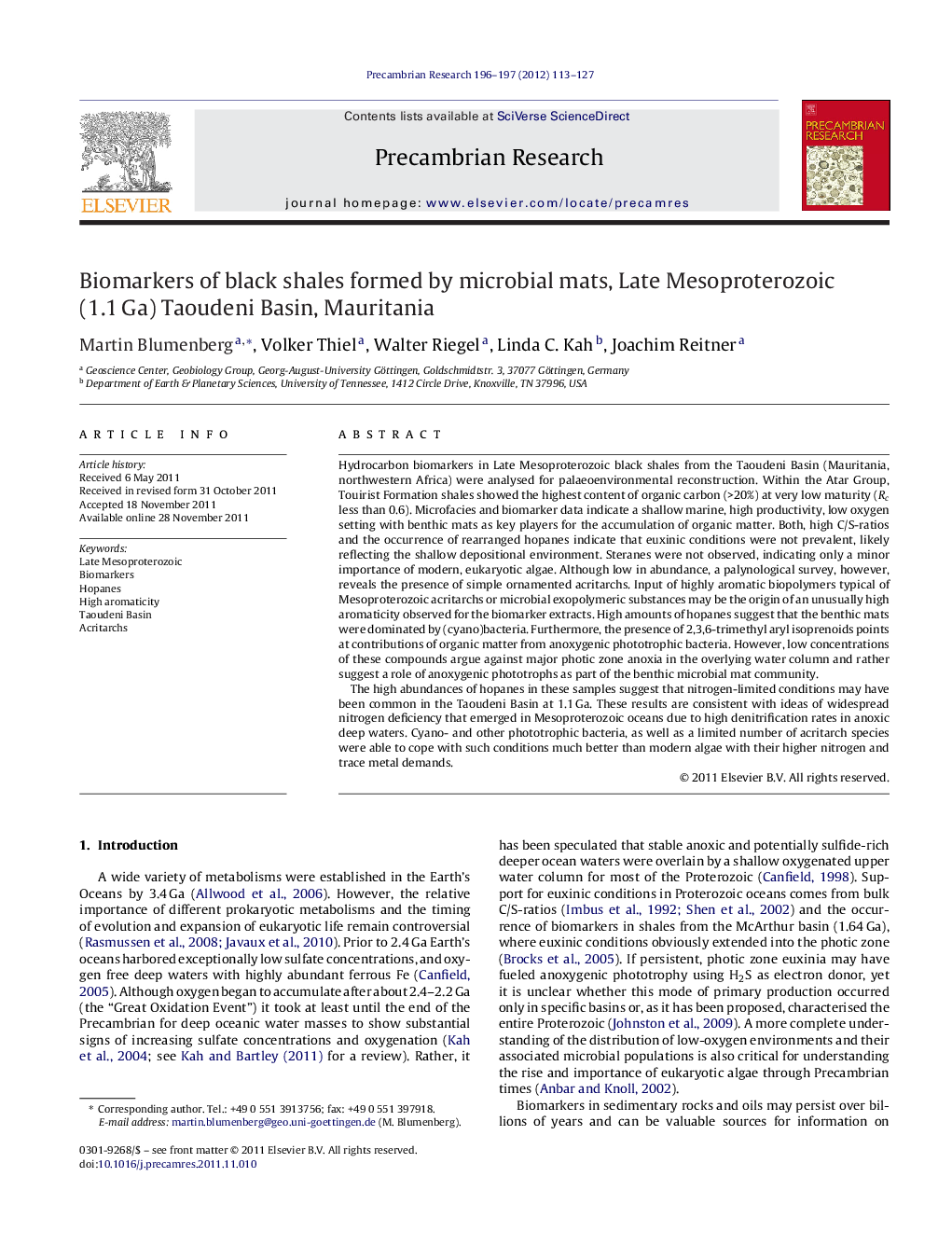| کد مقاله | کد نشریه | سال انتشار | مقاله انگلیسی | نسخه تمام متن |
|---|---|---|---|---|
| 4723600 | 1639661 | 2012 | 15 صفحه PDF | دانلود رایگان |

Hydrocarbon biomarkers in Late Mesoproterozoic black shales from the Taoudeni Basin (Mauritania, northwestern Africa) were analysed for palaeoenvironmental reconstruction. Within the Atar Group, Touirist Formation shales showed the highest content of organic carbon (>20%) at very low maturity (Rc less than 0.6). Microfacies and biomarker data indicate a shallow marine, high productivity, low oxygen setting with benthic mats as key players for the accumulation of organic matter. Both, high C/S-ratios and the occurrence of rearranged hopanes indicate that euxinic conditions were not prevalent, likely reflecting the shallow depositional environment. Steranes were not observed, indicating only a minor importance of modern, eukaryotic algae. Although low in abundance, a palynological survey, however, reveals the presence of simple ornamented acritarchs. Input of highly aromatic biopolymers typical of Mesoproterozoic acritarchs or microbial exopolymeric substances may be the origin of an unusually high aromaticity observed for the biomarker extracts. High amounts of hopanes suggest that the benthic mats were dominated by (cyano)bacteria. Furthermore, the presence of 2,3,6-trimethyl aryl isoprenoids points at contributions of organic matter from anoxygenic phototrophic bacteria. However, low concentrations of these compounds argue against major photic zone anoxia in the overlying water column and rather suggest a role of anoxygenic phototrophs as part of the benthic microbial mat community.The high abundances of hopanes in these samples suggest that nitrogen-limited conditions may have been common in the Taoudeni Basin at 1.1 Ga. These results are consistent with ideas of widespread nitrogen deficiency that emerged in Mesoproterozoic oceans due to high denitrification rates in anoxic deep waters. Cyano- and other phototrophic bacteria, as well as a limited number of acritarch species were able to cope with such conditions much better than modern algae with their higher nitrogen and trace metal demands.
► Late Mesoproterozoic black shales from Mauretania were studied for biomarkers and microfacies.
► Benthic microbial mats are indicated as majors source for abundant immature TOC (>20%).
► Lack of steranes suggests minor importance of modern algae and supports nitrogen-deficiency in the marine setting.
Journal: Precambrian Research - Volumes 196–197, February 2012, Pages 113–127